
Patrick Eamon Mills is an English comics writer and editor who, along with John Wagner, revitalised British boys comics in the 1970s, and has remained a leading light in British comics ever since. He has been called "the godfather of British comics".
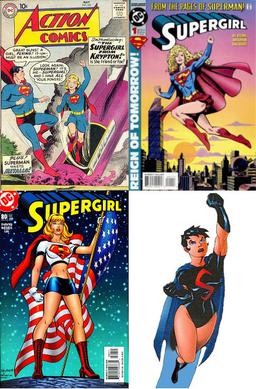
Supergirl is the name of several fictional superheroines appearing in American comic books published by DC Comics. The original, current, and most well known Supergirl is Kara Zor-El, the cousin of superhero Superman. The character made her first appearance in Action Comics #252 and was created by Otto Binder and Al Plastino.

The Topper was a UK comic published by D. C. Thomson & Co. Ltd that ran from 7 February 1953 to 15 September 1990, when it merged with The Beezer.
A British comic is a periodical published in the United Kingdom that contains comic strips. It is generally referred to as a comic or a comic magazine, and historically as a comic paper.

Elseworlds was the publication imprint for American comic books produced by DC Comics for stories that took place outside the DC Universe canon. Elseworlds publications are set in alternate realities that deviate from the established continuity of DC’s regular comics. The "Elseworlds" name was trademarked in 1989, the same year as the first Elseworlds publication.

The Superman Family was an American comic book series published by DC Comics from 1974 to 1982 featuring supporting characters in the Superman comics. The term "Superman Family" is often used to refer to the extended cast of characters of comics books associated with Superman. A similarly titled series, Superman Family Adventures, was published in 2012.
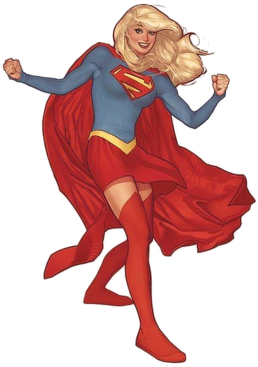
Kara Zor-El (Supergirl) also known by her adoptive names of Linda Lee Danvers, Kara Kent, Linda Lang, and Kara Danvers, is a superheroine appearing in American comic books published by DC Comics. She was created by Otto Binder and designed by Al Plastino. Danvers first appeared in Action Comics #252 's "The Supergirl from Krypton" story. Kara is the biological cousin of Kal-El, who went on to adopt the name of Clark Kent and the superhero Superman. Her father, Zor-El, is the brother of Superman’s father, Jor-El. During the 1980s and the revolution of the Modern Age of Comics, Superman editors believed the character's history had become too convoluted, thus killing Supergirl during the 1985 Crisis on Infinite Earths event and retconning her out of existence.

Aspen Comics is a California entertainment company founded in 2003 by artist Michael Turner. It has locations in Santa Monica and Marina Del Rey. The company is best known for producing comic books and figurines.

Paul Kupperberg is an American writer and comics editor. He is currently a writer and executive editor at Charlton Neo Comics and Pix-C Webcomics, and a contributing author with Crazy 8 Press. Formerly, he was an editor for DC Comics and executive editor of Weekly World News, as well as a writer of novels, comic books, and newspaper strips.
Titan Magazines is the magazine-publishing division of Titan Publishing Group. Titan Magazines' publishing directors are Ricky Claydon and John Dziewiatkowski.
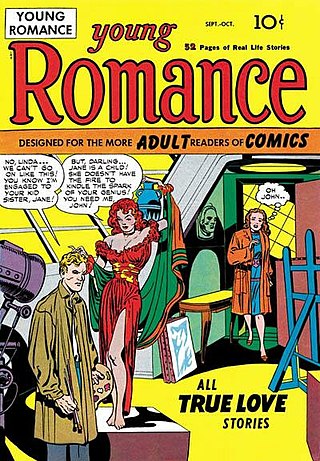
Romance comics is a comics genre depicting strong and close romantic love and its attendant complications such as jealousy, marriage, divorce, betrayal, and heartache. The term is generally associated with an American comic books genre published through the first three decades of the Cold War (1947–1977). Romance comics of the period typically featured dramatic scripts about the love lives of older high school teens and young adults, with accompanying artwork depicting an urban or rural America contemporaneous with publication.

Australian comics have been published since 1908 and Australian comics creators have gone to produce influential work in the global comics industry,
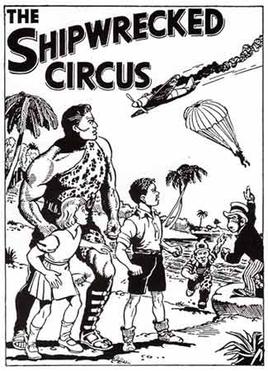
Paddy Brennan is an Irish comics artist who worked mainly in the UK, drawing adventure strips for D. C. Thomson & Co. titles. He was a freelancer, working six months of the year in Dublin and six months in London.
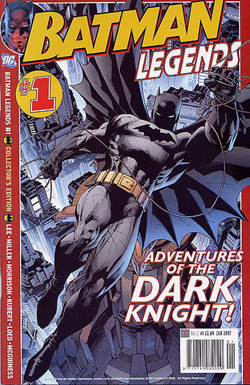
Batman Legends was a monthly anthology comic book series published in the UK by Titan Magazines as part of their DC Comics 'Collector's' Edition' range. Initially published by Panini Comics for 41 issues between October 2003 and November 2006, Titan subsequently took over publication with the launch of the comic's second volume. The title reprinted Batman-related comics originally published by DC Comics in the United States, typically including three stories per issue in a serialised format.

Supergirl is the name of seven comic book series published by DC Comics, featuring various characters of the same name. The majority of the titles feature Superman's cousin Kara Zor-El.
Notable events of 1967 in comics. See also List of years in comics.
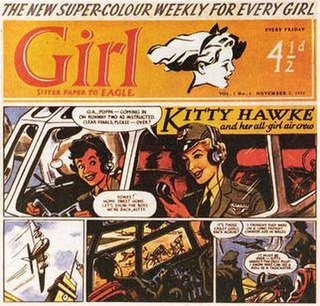
Girl was the name of two weekly comics magazines for girls published by IPC Magazines in the United Kingdom.
British girls' comics flourished in the United Kingdom from the 1950s through the 1970s, before beginning to decline in popularity in the 1980s and 1990s. Publishers known for their girls' comics included DC Thomson and Fleetway/IPC. Most titles appeared weekly, with the content primarily in picture-story format. The majority of the stories were serialized, with two or three pages per issue, over eight to twelve issues. They were marketed toward young teen girls.
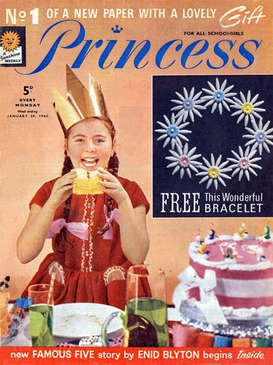
Princess was a weekly British magazine for girls, published from 30 January 1960 to 16 September 1967 by Fleetway Publications. The publication featured a mix of articles, features, and comic strips.















